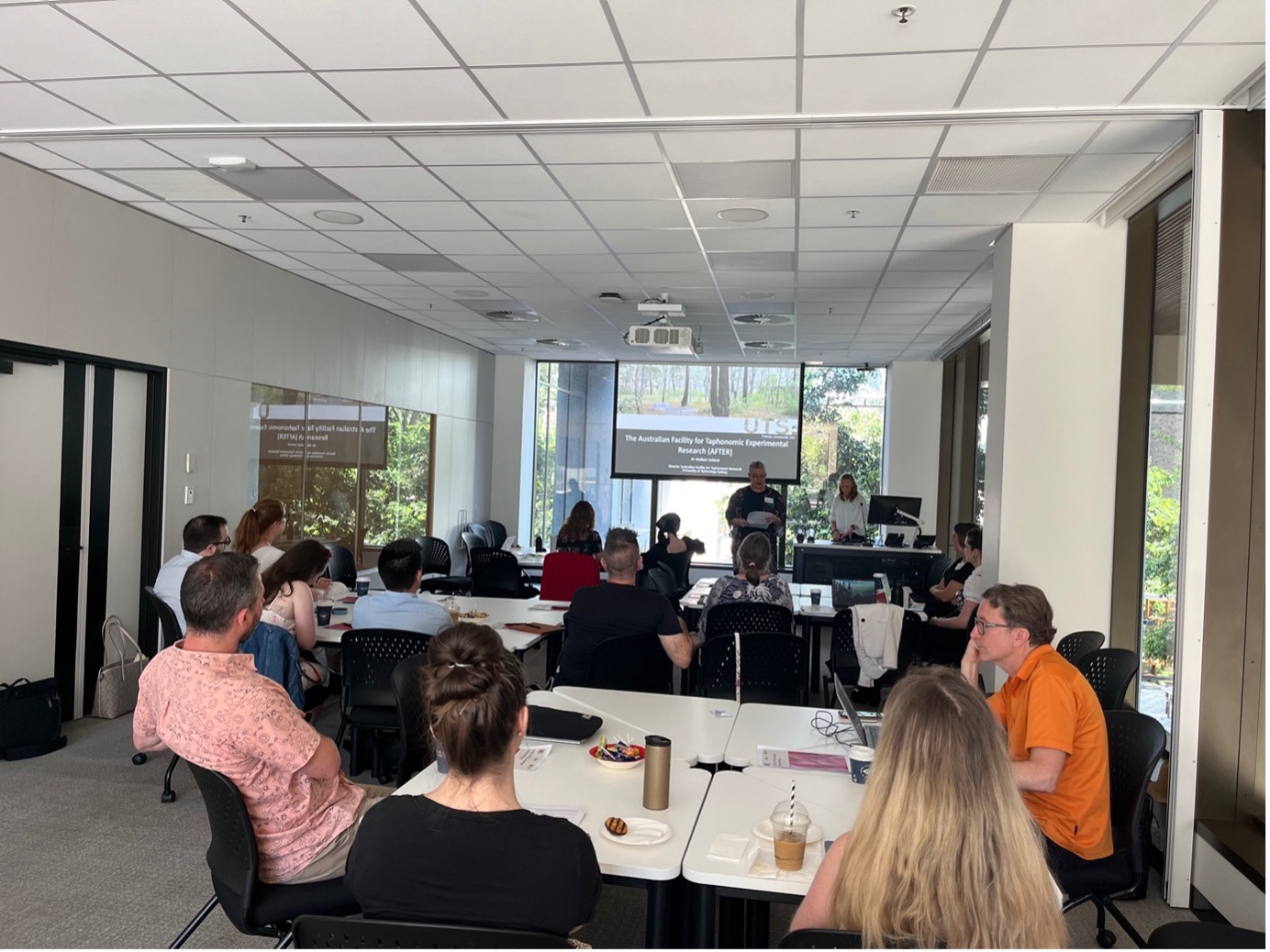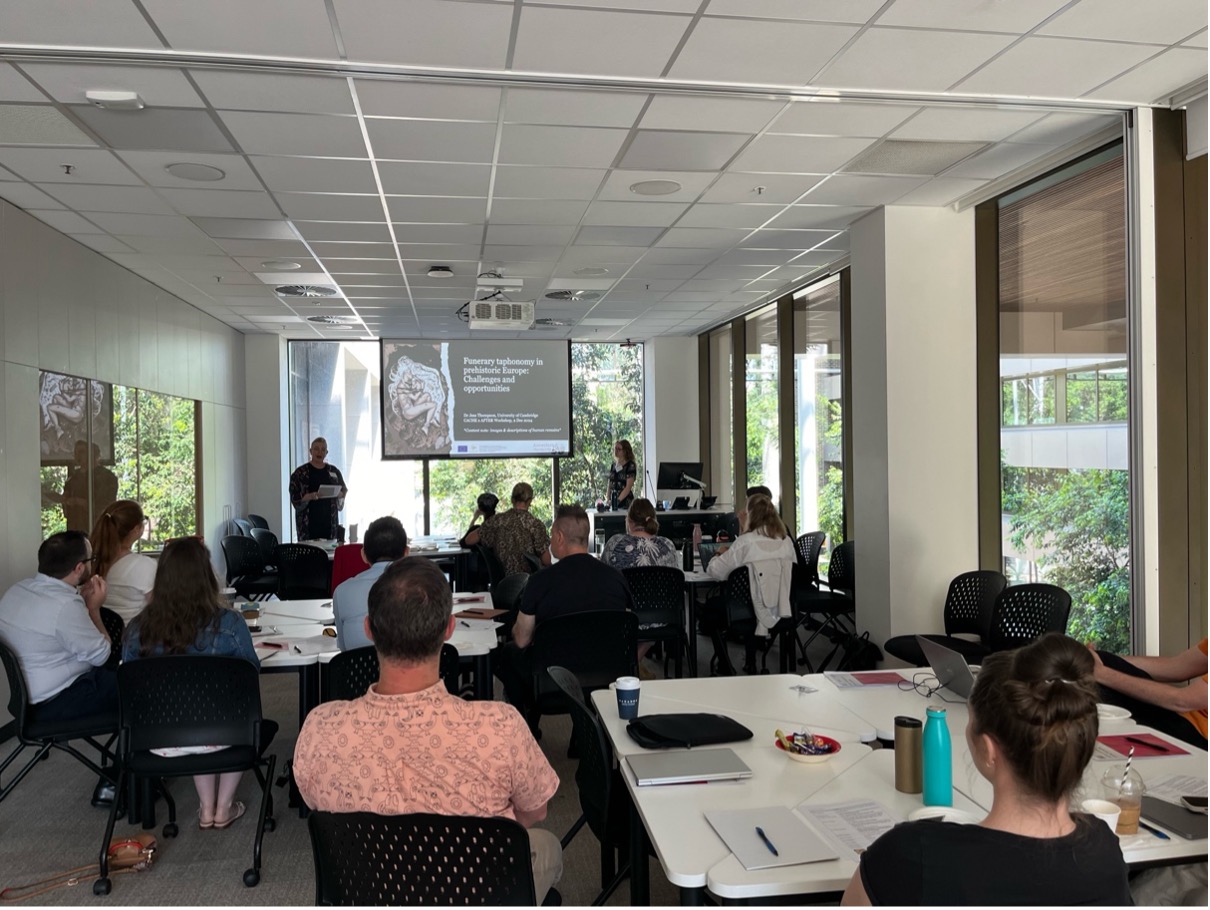CACHE x AFTER Collaboration Scoping Workshop

This one-day workshop aimed to showcase AFTER's aims, agenda and outlook, and explore potential research and teaching connections with MQ. Through the AFTER Director, Dr Maiken Ueland, the workshop also scoped prospective connections with AFTER's established industry partners.
Participants explored ways MQ colleagues might collaborate in existing and/or new activities surrounding chemistry, biology, mathematics, statistics, entomology, botany, toxicology, archaeology, anthropology, pathology, odontology, proteomics, geology, geophysics, remote sensing, digital imaging, geochemistry, behavioural sciences and crime scene investigation. The workshop participants also explored how the Arts and Social Sciences might engage with the facility through a range of multi/interdisciplinary pathways, including (but not limited to) studies of dying and death, funereal practices, ethics, law, criminology, and body donation. All participants offered profile presentations encompassing new methodologies and potential future research collaborations.
Also present at the event was our CACHE Visiting Fellow, Dr Jess Thompson, from the McDonald Institute for Archaeological Research, University of Cambridge, UK. Dr Thompson is a leading expert in archaeological taphonomy, and has just secured the prestigious appointment of Inaugural Curator of Human Osteology for the National Museum of Scotland. Jess participated in the workshop to assist identification of opportunities from a Cultural Heritage perspective, and prospective international collaborations.
Dr Thompson also delivered a keynote lecture on Bioarchaeological Taphonomy titled “Funerary taphonomy in prehistoric Europe: Challenges and opportunities”.
The abstract was as follows: Across European prehistory, the dead were treated in probably almost every way we can imagine—and some that we can’t! There are contexts that present us with recognisable individuals: straightforward inhumations with clothing and personal items, disturbed burials, or even bog bodies. There are practices that leave us with complex assemblages requiring novel methodologies: collective depositions of dozens to hundreds of individuals, mass burials, massacre sites, and cremations. Then there are idiosyncratic circumstances that confound our usual typologies: composite bodies or mummies, cranial caches reflecting diverse ritual treatments, bundles of loose teeth, or singular bones presenting multiple taphonomic interventions. Usually, the less like an ‘individual’ a burial looks, the more interesting they are taphonomically. Thus, European prehistory provides a diversity of cases for widening our imagination about funerary practices and testing traditional assumptions about taphonomic processes. Some productive intersections between prehistoric burial practices and actualistic taphonomic research have already been found, and the results are contributing new insights to archaeological interpretations. This talk focuses on the challenges and opportunities in three areas: decomposition; disarticulation; and estimating the original number of individuals deposited in a collective assemblage.
The event was a resounding success. Thank you to all involved for their contributions to the CACHE x AFTER Collaboration Scoping Workshop!
Image (top) Prof. Ronika Power, CACHE Director, introducing the keynote lecture on the Australian Facility for Taphonomic Experimental Research (AFTER, UTS), by AFTER Director, Dr Maiken Ueland, at the CACHE X AFTER Collaboration Scoping Workshop. Credit: Hannah Vogel 2024.

Image (bottom) Prof Ronika Power, CACHE Director, introducing the keynote lecture on Bioarchaeological Taphonomy by 2024 CACHE Visiting Scholar, Dr Jess Thompson (Cambridge) at the CACHE X AFTER Collaboration Scoping Workshop. Credit: Hannah Vogel 2024.
